'The Universe in a Mirror' (US, 2008): Book Excerpt
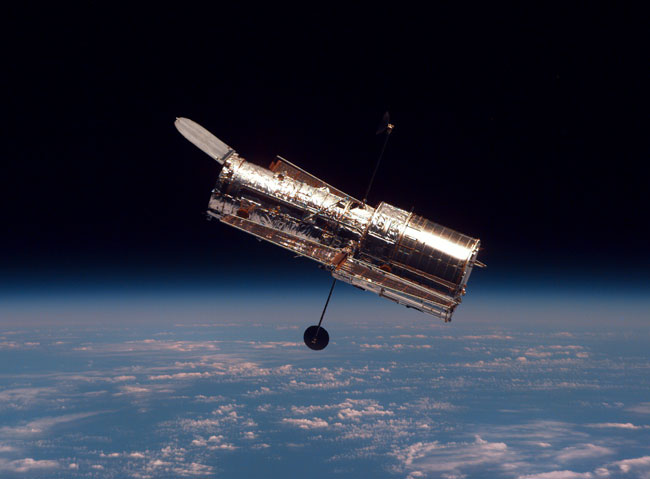
Science Writer Robert Zimmerman is the author of "The Universe in a Mirror: The Saga of the Hubble Space Telescope and the Visionaries Who Built It" (2008, Princeton University Press). The book chronicles the multidecade struggle to get Hubble into space, the people who fought to keep it alive (often at the expense of their own careers and personal lives), and the incredible science it has produced.
Zimmerman is also the author of three other books about space science and exploration, including "Genesis: The Story of Apollo 8: the First Manned Flight to Another World."
Below is an excerpt from "The Universe in a Mirror":
When astronomer John Herschel completed his survey of the heavens in the 1840s, he had catalogued thousands of beautiful but hazy objects scattered everywhere across the sky amid the innumerable stars. Different from planetary nebulae, which often have distinct structures surrounding specific stars and are generally clustered along the plane of the Milky Way, these "nongalactic nebulae" generally looked like fuzzy footballs, spirals, or whirlpools. For the next hundred years, astronomers puzzled over their origin. Not only did no one know what they were, no one was even sure if they were local objects inside our galaxy or distant island universes comparable to the Milky Way. [The Hubble Space Telescope at 25: A Photo Anniversary]
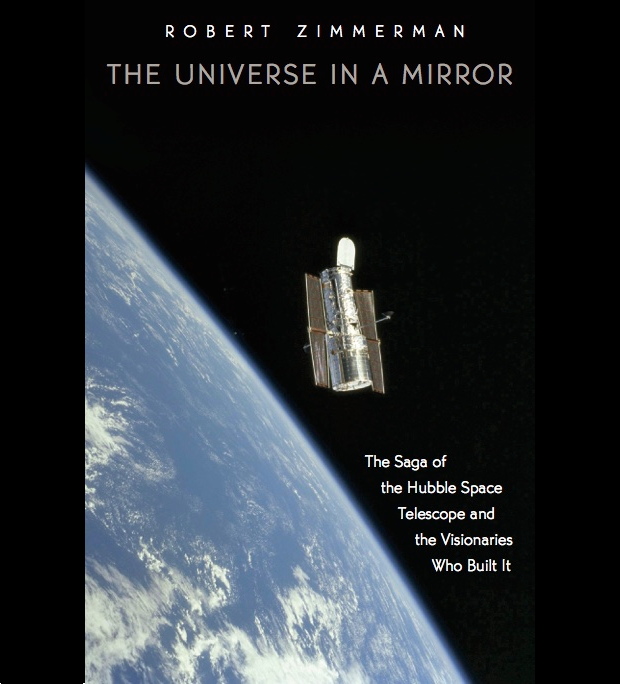
In the 1920s, the American astronomer Edwin Hubble finally had a tool for finding out. Using the 100-inch Hooker telescope at Mount Wilson, California in 1924, he was able to resolve a large number of individual stars in several of the larger nongalactic nebulae, proving that their fuzziness was caused by billions of stars, not dust or gas. More importantly, in the Great Nebula in Andromeda about three dozen of those stars were variable, with twelve being a special type of variable star called Cepheids. Cepheids are unique in that their intrinsic brightness, or absolute magnitude, is directly related to the length of their pulsations. The brighter they are, the slower they pulse.
Based on the pulse rates of the Cepheids in Andromeda, Edwin Hubble could compute their absolute brightness, and from this the distance from Earth, which he estimated to be about a million light-years. Soon he found Cepheids in a number of other nongalactic nebulae, proving that these too were many millions of light-years away. Though later research has significantly refined the estimated distances to these galaxies, Hubble’s work provided proof that the universe was filled with innumerable collections of stars as large as if not larger than our home galaxy, the Milky Way.
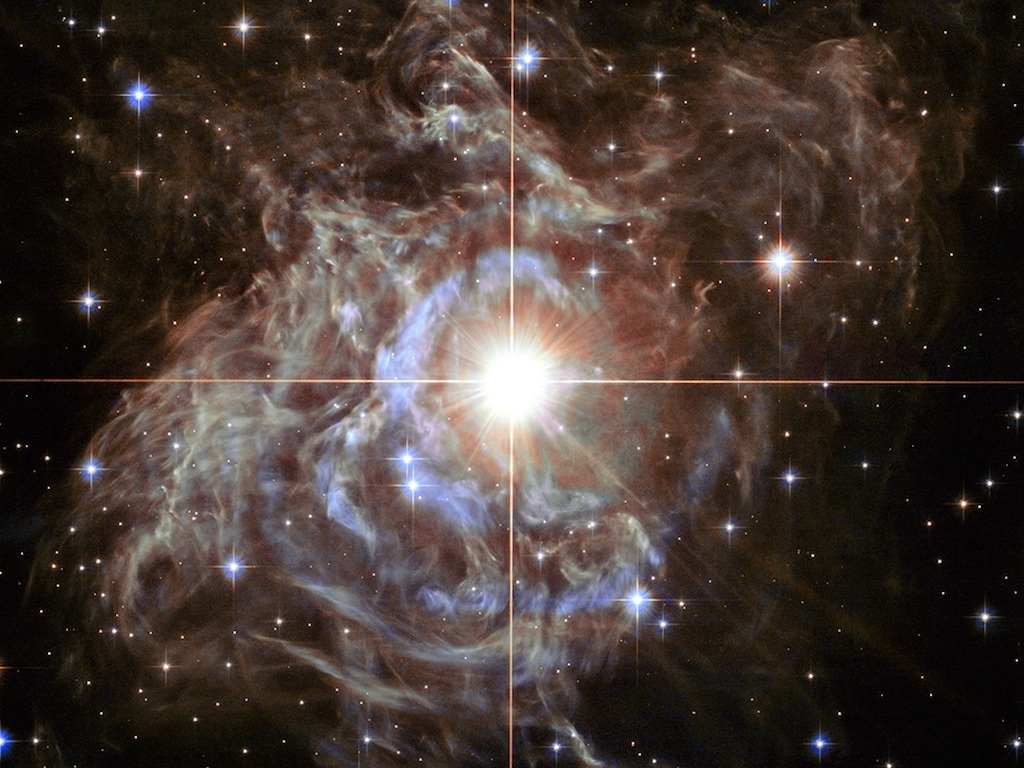
This wasn’t all, however. Even as Edwin Hubble made this discovery, he noticed a strange phenomenon. The farther away a galaxy was, the faster that galaxy seemed to fly away from the Milky Way.
Get the Space.com Newsletter
Breaking space news, the latest updates on rocket launches, skywatching events and more!
Hubble discovered this phenomenon by noting the "redshift" of the light coming from these and other distant galaxies, as compiled by other astronomers. If a galaxy or star is approaching the Earth, the wavelengths of light it emits will be squeezed together by that motion, making them shorter and thus shifting the color of that light toward the blue end of the spectrum. And if the star is instead moving away from the Earth, that movement will stretch the light waves, so that its color will shift toward the red or longer end of the spectrum. Since scientists know the exact wavelength at which elements produce lines in a star’s spectrum, if they see any shift of those lines to either the blue or red, they know the star is moving and in what direction. The amount of shift will also tell them the speed of that movement.
![Find out how Hubble has stayed on the cutting edge of deep-space astronomy for the past 20 years here. [See the full Hubble Space Telescope Infographic here.]](https://cdn.mos.cms.futurecdn.net/qK2xWDesnWUEsoFccAR7pM.jpg)
Hubble found that the spectrum of almost every galaxy was shifted to the red. More importantly, the greater the distance, the greater the redshift. In other words, the universe was expanding.
Scientists understood immediately that this expansion was not actually motion. The Milky Way is not the center of the universe, with all other galaxies fleeing from us in terror. Instead, the space in which everything exists is getting stretched.
The best and most oft-used analogy to describe this phenomenon is that of a balloon. Blow the balloon up about halfway. Then take a felt marker and place dots across the balloon’s surface, spaced about one inch apart. Now pump more air into the balloon. As you do so the dots will move away from each other so that when the balloon’s size is doubled the space between all adjacent dots will double, going from one inch to two, with dots that started out two inches apart now four inches apart and dots four inches apart now separated by eight inches. In other words, the distances increase linearly.
Should you focus your eye on a single dot as the balloon grows in size, it will appear as if it is at the center of an expansion and all other dots are fleeing from it. Repeat this experiment but focus on another dot and it will appear to be at the center.
More significantly, note that none of the dots are really moving. Instead, the "space" in which they are embedded is expanding, moving them away from each other as it grows. Similarly, the galaxies in space are not really fleeing from each other. Instead, it is space itself, the very fabric of the universe in which they reside, that is expanding. By extrapolating that expansion backward scientists found that the universe appeared to have a cataclysmic beginning, what astronomer Fred Hoyle labeled contemptuously as the Big Bang.
Determining the rate of expansion would help scientists calculate how long ago the Big Bang happened. However, in the decades following Edwin Hubble’s initial work astronomers found it difficult to come up with a precise number. Ground-based telescopes did not have the resolution to see Cepheids in more than a handful of galaxies, none more than one or two hundred million light-years away. Other tools to measure distance, such as the brightness of galaxies, were simply not reliable or precise enough. As a result, estimates of the age of the universe in the late 1980s and early 1990s ranged anywhere from 12 to 20 billion years. To more precisely measure the expansion rate, which astronomers dubbed the Hubble Constant in honor of Edwin Hubble, required a significant increase in resolution, which would allow the measurements of Cepheids in galaxies far more distant.
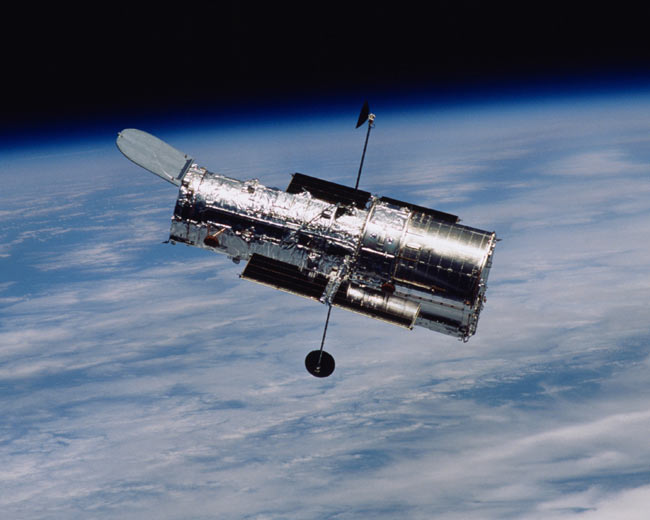
In other words, measuring the precise age of the universe required a telescope above the atmosphere. When it was launched, one of the Hubble Space Telescope’s primary missions was to answer this question. In fact, it had been the main reason the astronomers had resisted shrinking the telescope’s mirror below 2.4 meters. Smaller than that and the space telescope would not have been able to see Cepheids far enough away to resolve the issue.
Once the space telescope was fixed, astronomers were able to use it to identify Cepheid variables in almost three dozen different galaxies in the distant Virgo, Fornax, and Leo clusters of galaxies, and were able to narrow the range of estimates for the rate of expansion to about ten percent. From this, they were able to estimate that the Big Bang occurred approximately 13.7 billion years ago, give or take about a billion and a half years.
But that was not all. Of all of the discoveries that have come with the help of the Hubble Space Telescope, the one that is probably the most significant is the one that no scientist expected: this expansion of the universe seems to be accelerating, on vast scales.
Before the mid-1990s, astronomers wondered whether the mass of the universe was sufficient to slow the expansion enough so that it would eventually stop growing and collapse back onto itself. If so, the universe would be considered "closed." If not, the universe was "open," and the expansion would continue forever, until the distance between our galaxy and all its neighbors was so great that we could no longer see them. In either case, astronomers assumed that the expansion was being slowed by gravity. Just as gravity will cause the debris from an explosion to slow down as it flies away, the mass of the galaxies exerts a force on the expansion, causing it to slow as well.
In the mid-1990s two different teams of astronomers, the High-z Supernova Search Team, led by Brian Schmidt of the Siding Spring Observatory in Australia, and the Supernova Cosmology Project, led by Saul Perlmutter of the Lawrence Berkeley National Laboratory in California, used a host of ground-based telescopes as well as Hubble to search out as many distant type Ia supernovae as possible. Since the intrinsic brightness of these supernovae can be determined, astronomers can estimate their distance with reasonable accuracy, depending on their apparent brightness.
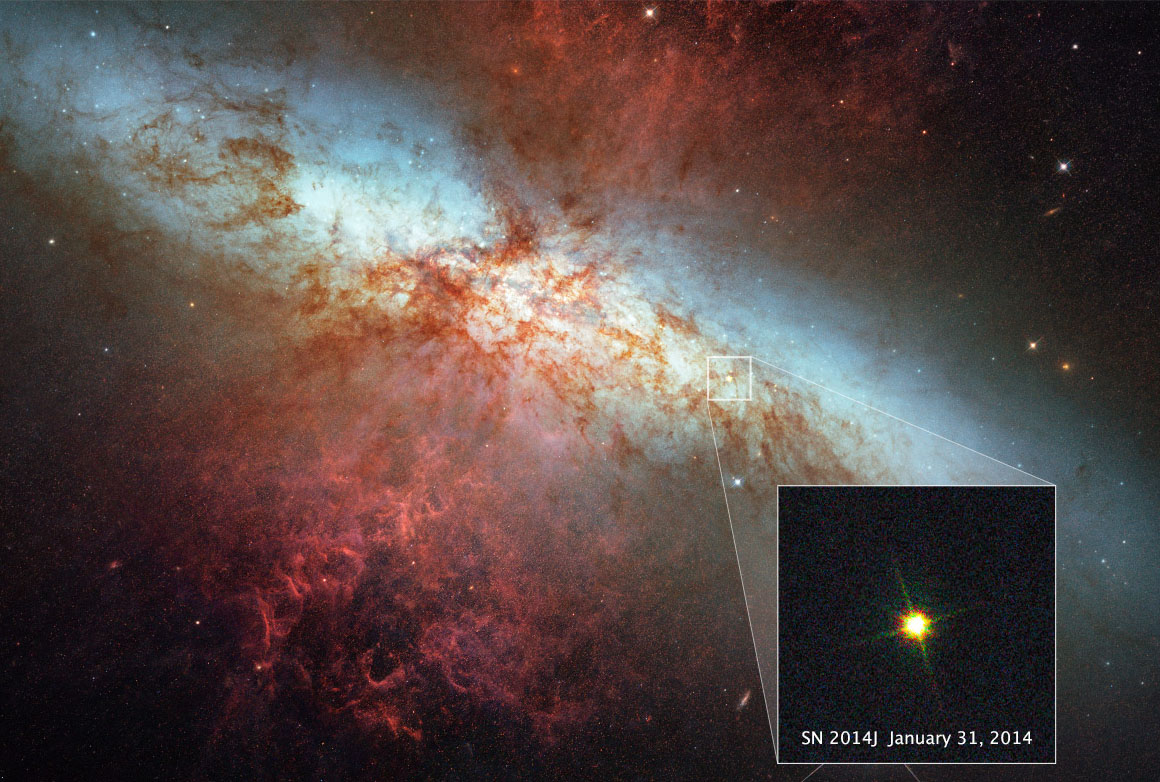
To the astonishment of the scientists on both teams, at greater distances the supernovae were dimmer than expected, by 25 percent, meaning that they were farther away than expected and implying that over the last five billion years the expansion rate was actually increasing. It was as if the pump forcing air into the balloon began working faster as the balloon got larger.
When shortly after this discovery I asked Mario Livio, a scientist at the Space Telescope Science Institute, his thoughts on the matter, he couldn’t help noting his amazement. "This phenomenon was exactly the opposite of what we would have expected." [How the Hubble Space Telescope Changed Our View of the Cosmos]
Consequently, astronomers have attributed the acceleration to something they have labeled "dark energy" (in that they as yet have no idea what it is), and have estimated that it somehow acts to repulse the effect of gravity over large distances. Furthermore, scientists think this mysterious dark energy constitutes almost two-thirds of the universe.
And most amazing of all, Einstein himself had both predicted and rejected its existence. In the 1917 he had inserted into his equations something he dubbed the Cosmological Constant in order to make those equations describe a static universe. When Edwin Hubble later showed that the universe was not static but expanding, Einstein renounced this constant, eventually calling it his "biggest blunder," according to physicist George Gamow. Eight decades later, data from the Hubble Space Telescope proved that Einstein had actually been right, and that a variant of his cosmological constant was required to make his equations work.
Once again the universe has surprised us. As the mathematical biologist J.B.S. Haldane once wrote, "The universe is not only queerer than we suppose, but queerer than we can suppose."
BUY "The Universe in a Mirror" by Robert Zimmerman for $19.95 >>>
Follow us @Spacedotcom, Facebook and Google+.
Join our Space Forums to keep talking space on the latest missions, night sky and more! And if you have a news tip, correction or comment, let us know at: community@space.com.









